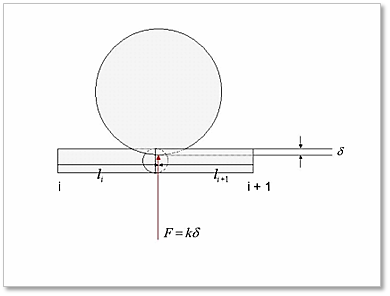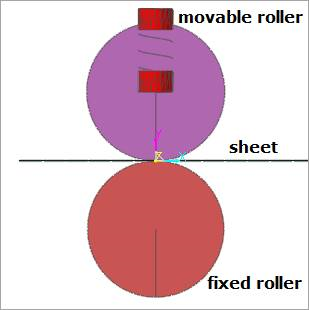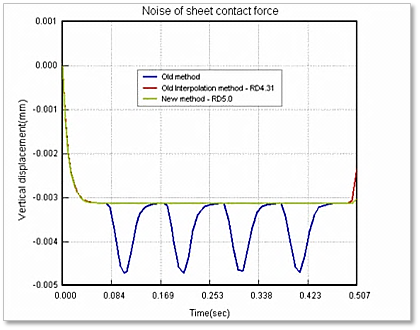24.2.1.1. Reduce Noise of Sheet Contact Force

Figure 24.9 Contact force in the circular part of sheet
When a roller or a guide edge makes contact near a circular part of sheet segments, a contact force shows a tendency to increase due to double contacts. Consequently the results contain a noise with a frequency dependent on the length of the sheet segment. To reduce the double contact effect, the k and c coefficients are interpolated in the circular parts when computing the contact force. In this case, it is very important to balance the forces applied on two adjacent sheet bodies holding down the resultant contact force. As shown in Figure 24.9, the resultant contact forces are defined with the following equations.
A sheet passes through a roller pair as shown in Figure 24.10. As shown in the plot in Figure 24.11, a relative displacement of a translation joint of a movable roller that is plotted in red line has a noise with a frequency in the previous versions. But the blue line shows that the noise is reduced in this current version.

Figure 24.10 Example model for noise problem

Figure 24.11 Advanced result of example model